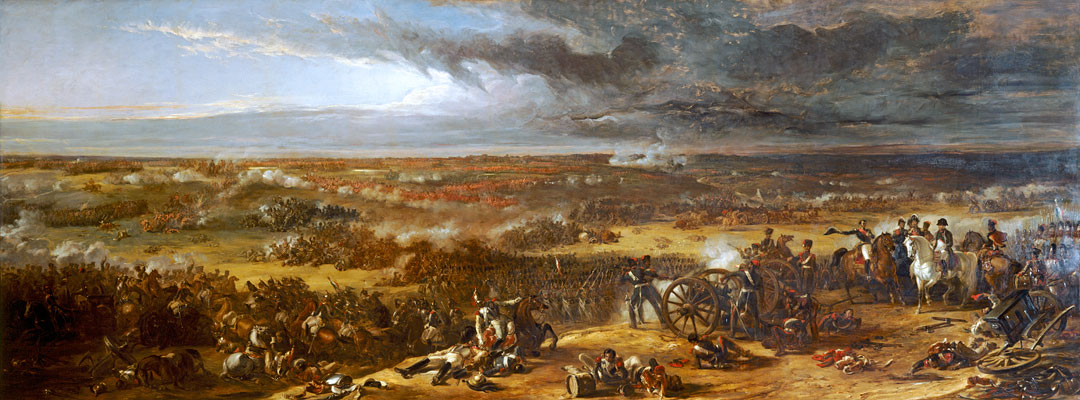Significance of Apsley House
Apsley House is internationally famous as the home of the 1st Duke of Wellington and his descendants. As such it is also a memorial to Britain’s triumph over the Napoleonic threat. It is also significant as a restored historic house, a celebration of Regency style, a museum commemorating the 1st Duke and the home of an outstanding collection of decorative and fine art.

APSLEY HOUSE AND THE 1ST DUKE OF WELLINGTON
The most important historical associations of the house are with the 1st Duke of Wellington, who acquired it in 1817. It remained his London house until his death in 1852. Besides associations with his domestic and political life, and with the commemoration of his military triumphs, Apsley House contains abundant evidence of the duke’s interests as a collector and commissioner of works of art.
Robert Adam
The original house was one of only three London houses that Adam designed, decorated and furnished in their entirety. The other two were Shelburne (later known as Lansdowne) House for the Earl of Bute, and 20 St James’s Square for Sir William Watkins-Wynn.
Regency Interiors
Apsley House is an important survival of a Regency interior, one of only a few such properties that can still be visited by the public.
The research and renovation programme undertaken by the Victoria and Albert Museum from 1970 saw the reintroduction of period features and the redisplay of furniture and objects in use during the 1st Duke of Wellington’s occupation of the house.
The magnificent interiors, including the restored Waterloo Gallery, State Dining Room and Drawing Rooms, reveal the Regency taste for decorative effects such as white and gold panelling, scagliola (fake marble) finishes and grand, scrolling ironwork.
Regency London
As befits its informal name ‘Number 1, London’, Apsley House stands in an important location for the landscaping of Regency London.
Travellers coming into central London from Regent’s Park first passed John Nash’s Marble Arch. This was originally designed to stand outside Buckingham Palace as a commemoration of British victories in the Napoleonic Wars, but moved to its present location in 1850–51.
Visitors would then pass through Decimus Burton’s Hyde Park screen abutting Apsley House and past the Wellington Arch at Hyde Park Corner. This was intended to form a grand entrance to Buckingham Palace gardens and Green Park from Piccadilly. Originally in line with the screen, it was moved eastwards in 1883.
A Monumental Landscape
Apsley House and its surroundings form a national memorial to the Duke of Wellington’s military victories. In addition to the Wellington Arch, a more personal tribute to the duke’s martial prowess can be found in Hyde Park: the naked bronze statue of Achilles, cast from captured cannon. It was made by sculptor Richard Westmacott (1775–1856) and raised in 1822 by the women of Britain in honour of the victorious general.
Memorials to more recent conflicts have joined the Wellington Arch around Hyde Park Corner. The Royal Artillery Memorial and Machine Gun Corps Memorial were both erected in 1925 in memory of the First World War. Others include the Memorial Gates, erected in 2002 to honour troops from Africa, the Caribbean and the Indian sub-continent, the Australian war memorial of 2003 and the RAF Bomber Command Memorial, unveiled in 2012.
Collections
Perhaps the most important aspect of the interiors at Apsley House is the magnificent collection of fine and decorative arts, formerly part of the collections of the 1st Duke of Wellington.
Over 3,000 fine paintings, sculptures, and works or art fashioned in silver, porcelain, porphyry, batons, swords and orders, given to Britain’s greatest military hero by grateful emperors, tsars and kings, are on display. Most notable are:
- Sculptures by Canova, including the statue of Napoleon originally commissioned from the Italian sculptor by Napoleon himself
- Paintings acquired by the 1st Duke from the Spanish royal collection, including masterpieces by Velásquez, Murillo, Rubens, Goya, Correggio, Van Dyck and Brueghel
- The Waterloo Shield and Standard Candelabra, presented to Wellington by the merchants and bankers of London in 1822.
Conservation
Find out what was discovered when Titian’s Mistress, a painting from the collection at Apsley House, went into the conservation studio for treatment in 2012.
READ MORE ABOUT APSLEY HOUSE
